Gardeners cursing as they yank out yellow blooms from the ground might be misplacing their anger. Not everything that looks like a dandelion is one.
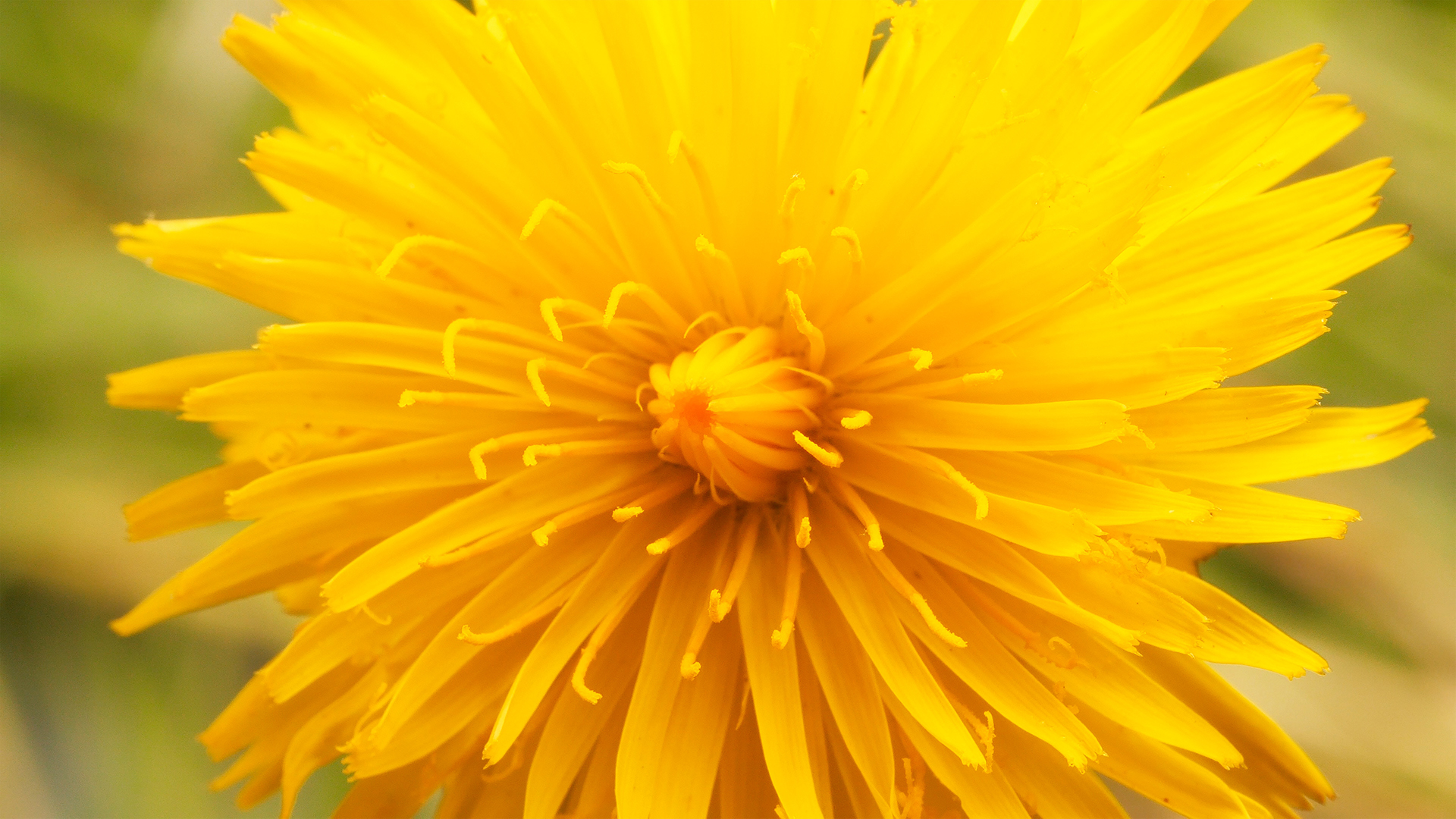
Dandelions have many doppelgangers, among them the most successful plant you’ve never heard of: catsears. Their claim to fame is that they were recently a clue in the New York Times crossword puzzle (“Dandelion look-alike”), but the plant is so prolific — it has spread from its native Morocco all around the world — that it doesn’t really need any press.
Chances are you’ll run across both dandelions and catsears in your backyard or at the park this fall, especially if they’re getting watered. Catsears also proliferate in pastures, where cows keep the grasses that compete with them at bay.
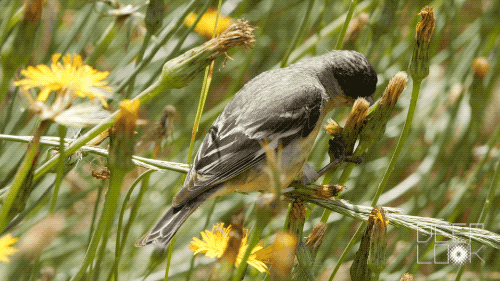
Bees and butterflies love the nectar and pollen provided by dandelions and catsears, and little songbirds like lesser goldfinches feed on their seeds. But it’s hard to convince some gardeners of their virtues.
“Most people who have a nice turf want only grasses,” said Joe DiTomaso, a weed researcher who retired from UC Davis.
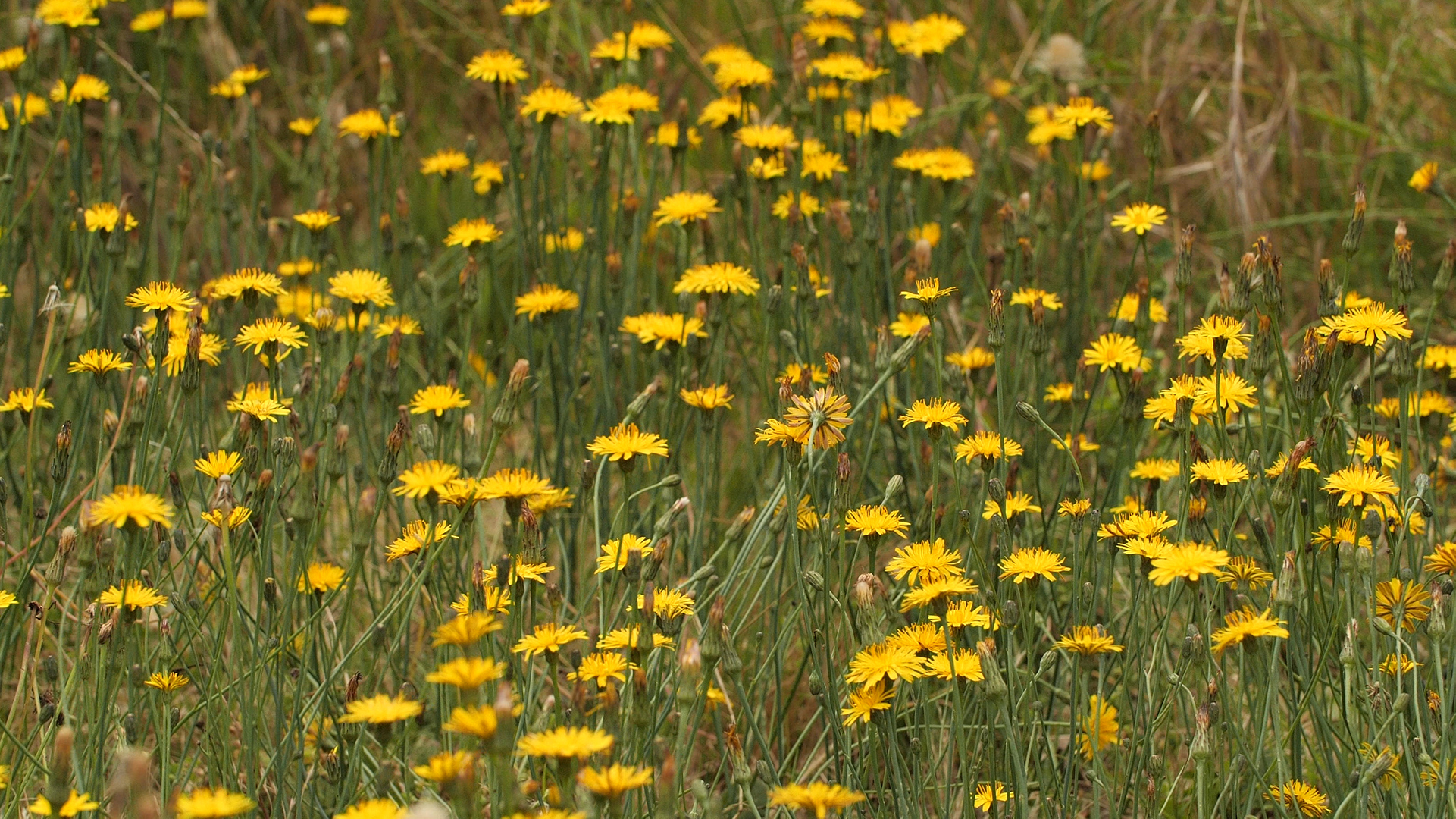
Frustratingly for lawn lovers, efforts to keep the turf looking good sometimes help dandelions and catsears. Their leaves grow close to the ground, so when the lawnmower chops down any blades of grass towering over them, they can more easily soak up the rays they need to grow.
Whether you’re a friend or a foe, telling dandelions and catsears apart could be useful — if only to know thine enemy — and a fun way to ponder what makes these yellow blooms so successful.
If you’re looking down at them, you’ll miss their differences. You need to get on your knees and take a close look.
Below their petals you’ll see green structures that hold the bloom. They’re called phyllaries. In catsears, they all point up. In dandelions, some phyllaries curl down.
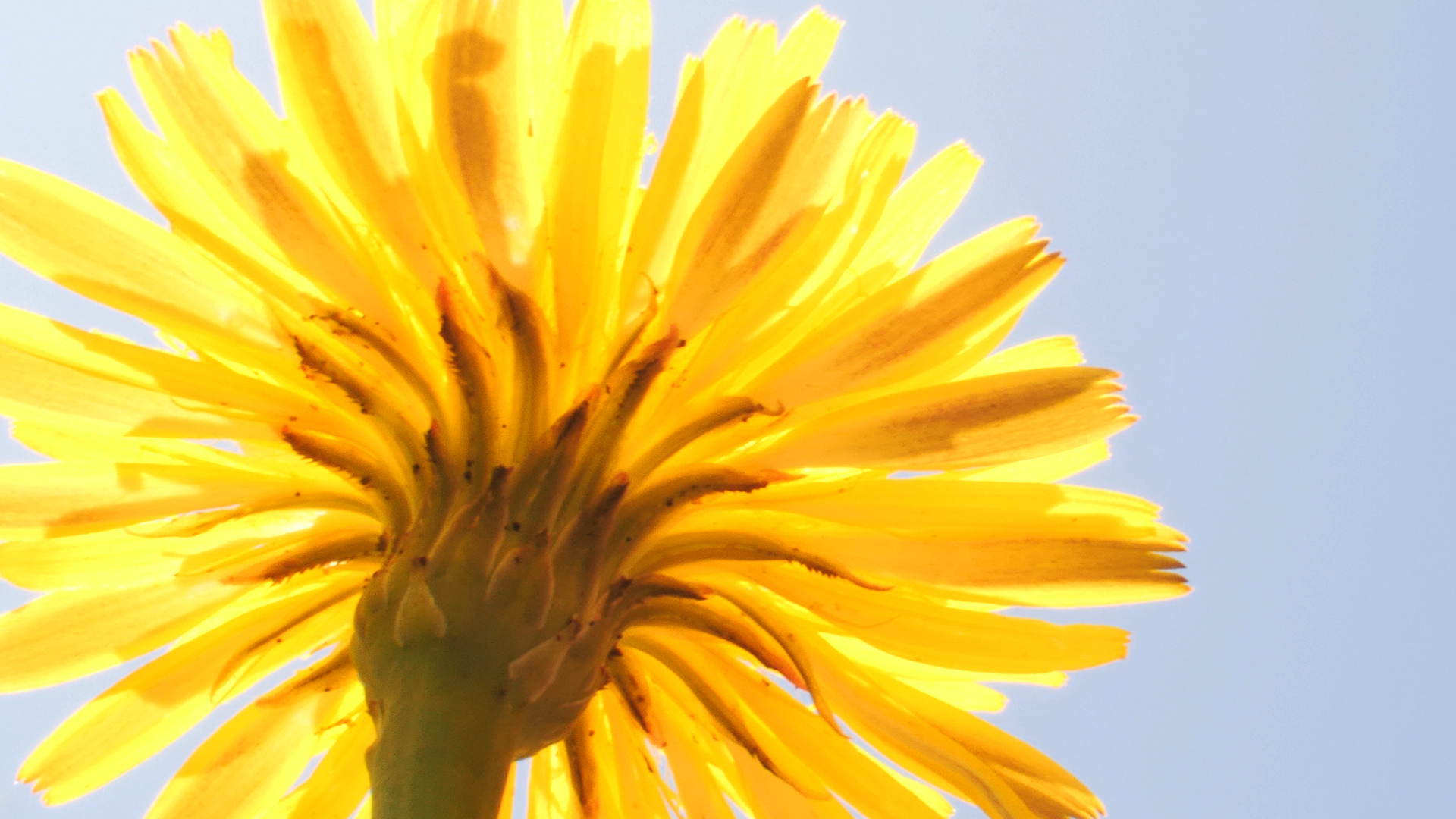
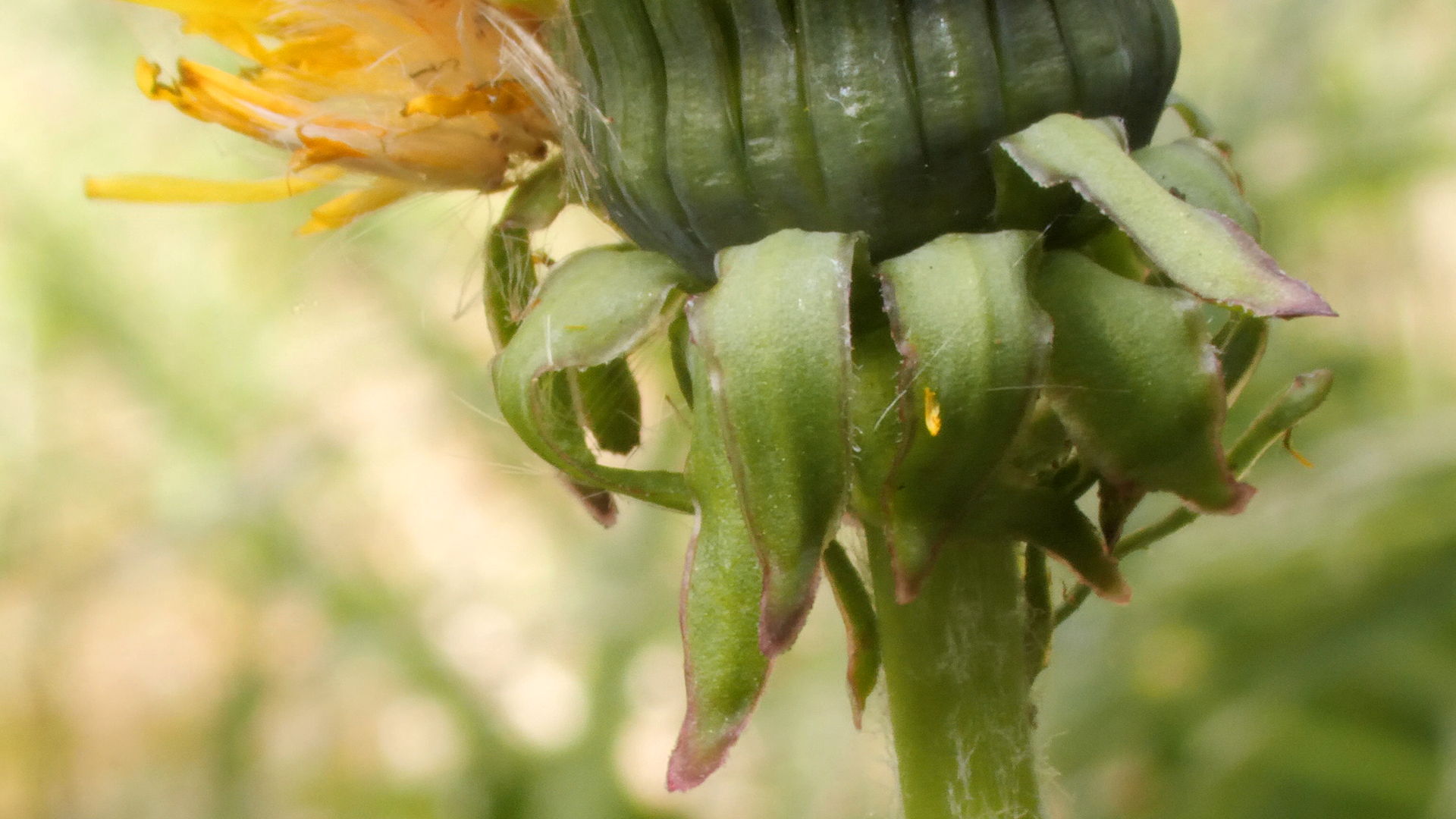
Dandelion and catsear leaves have a similar shape, with toothed edges that give dandelions their name — an adaptation from the French dent-de-lion, or lion’s tooth. The leaves of the common catsear are more lobed than pointy and they’re furry, while dandelions’ are smooth. Both leaves are edible, prepared in salads or sauteed.
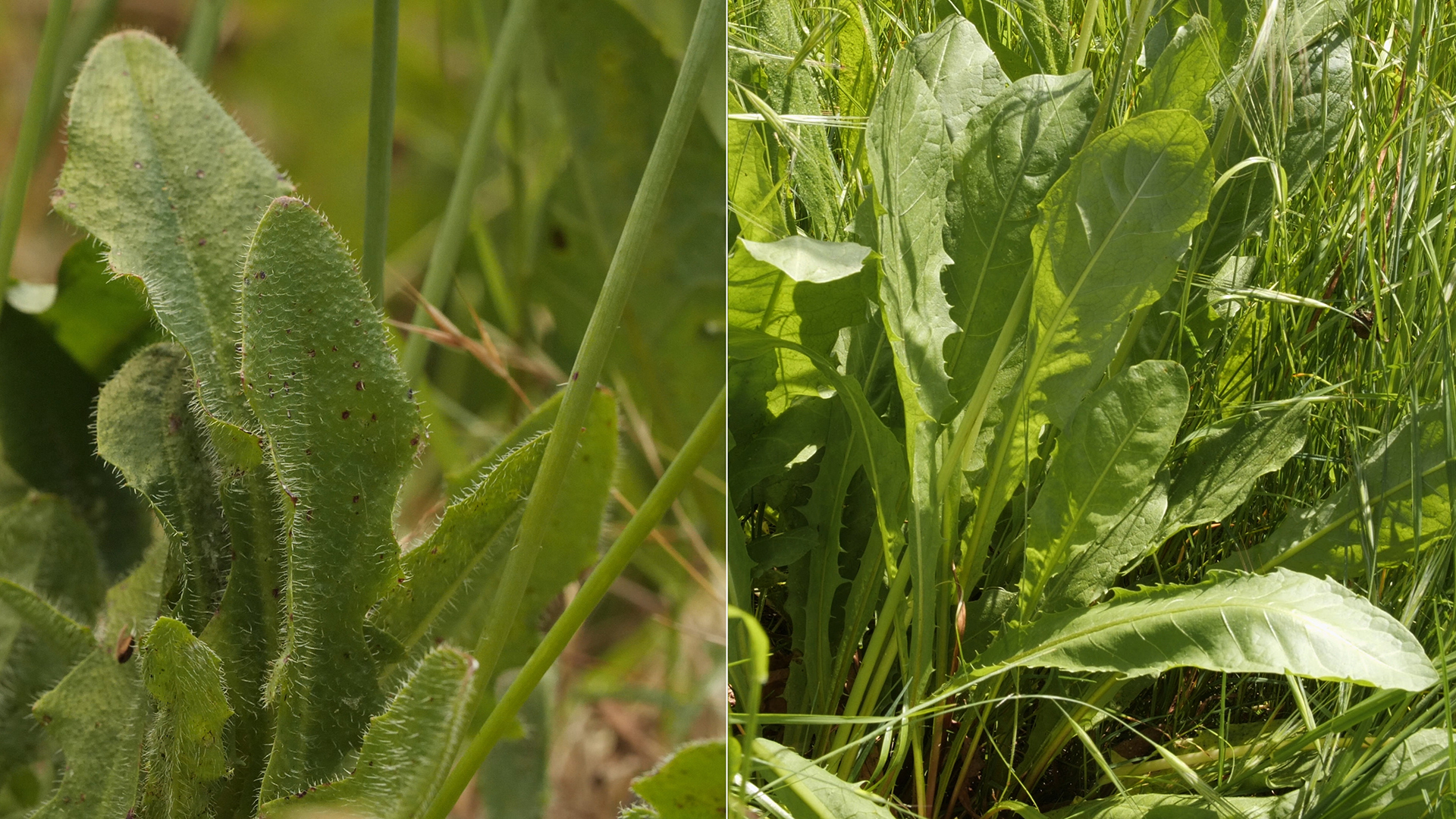
“If you eat an old dandelion leaf, it’s going to be extremely bitter,” said Austin Lynn, who studied the plants for his recently completed doctoral studies at the University of Missouri. “But if you eat a younger one, it’s much more pleasant.”
In a taste test he carried out, Lynn said dandelion leaves were described as similar to romaine lettuce or arugula.
Both dandelion and catsear blooms transform into fluffy globes called “clocks,” full of seeds. The dandelion’s clock is like a head of wispy gray hairs that just came from the salon, while the catsear’s featherlike globe looks like a dandelion that let its mane dry in the wind.
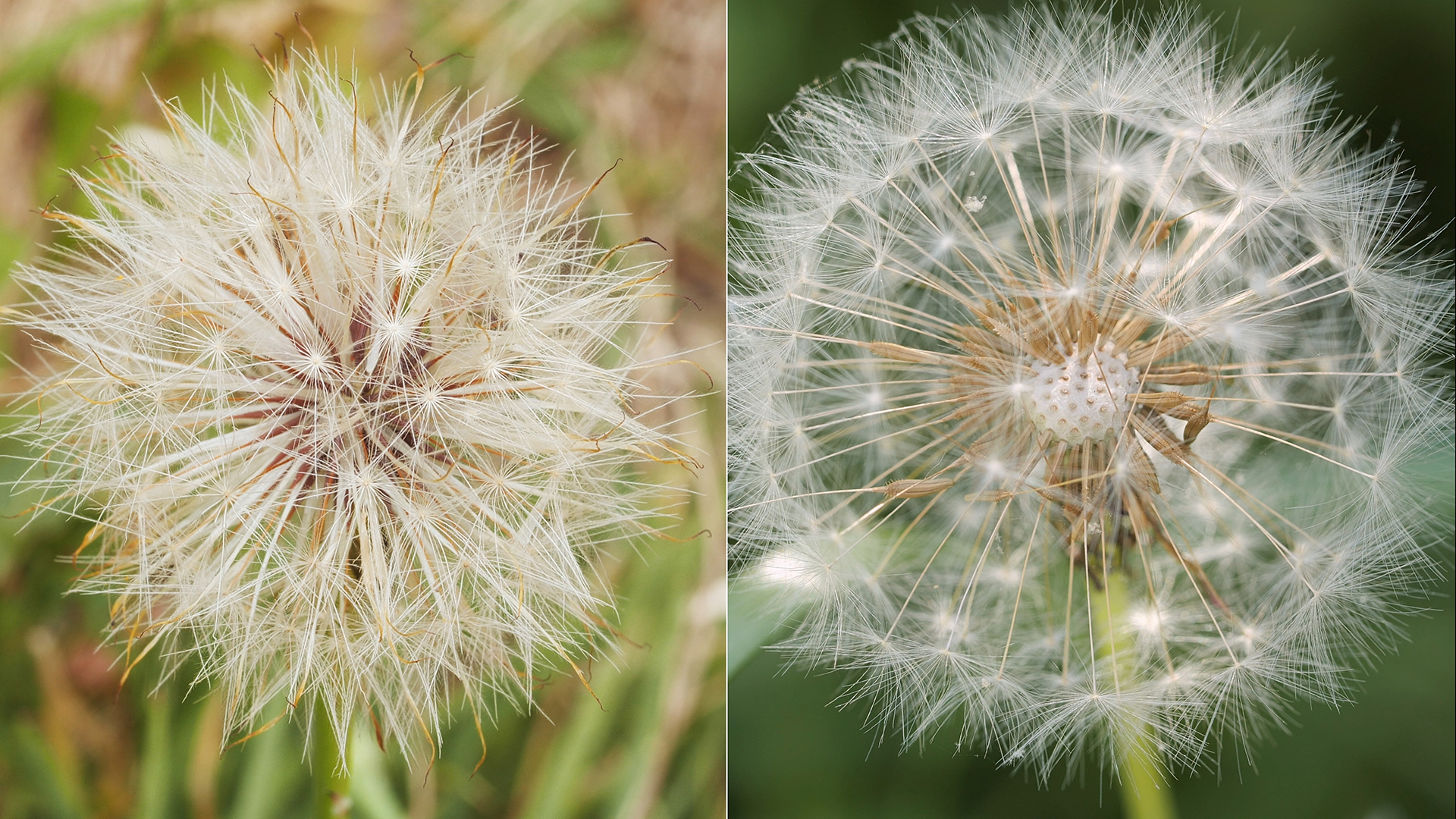
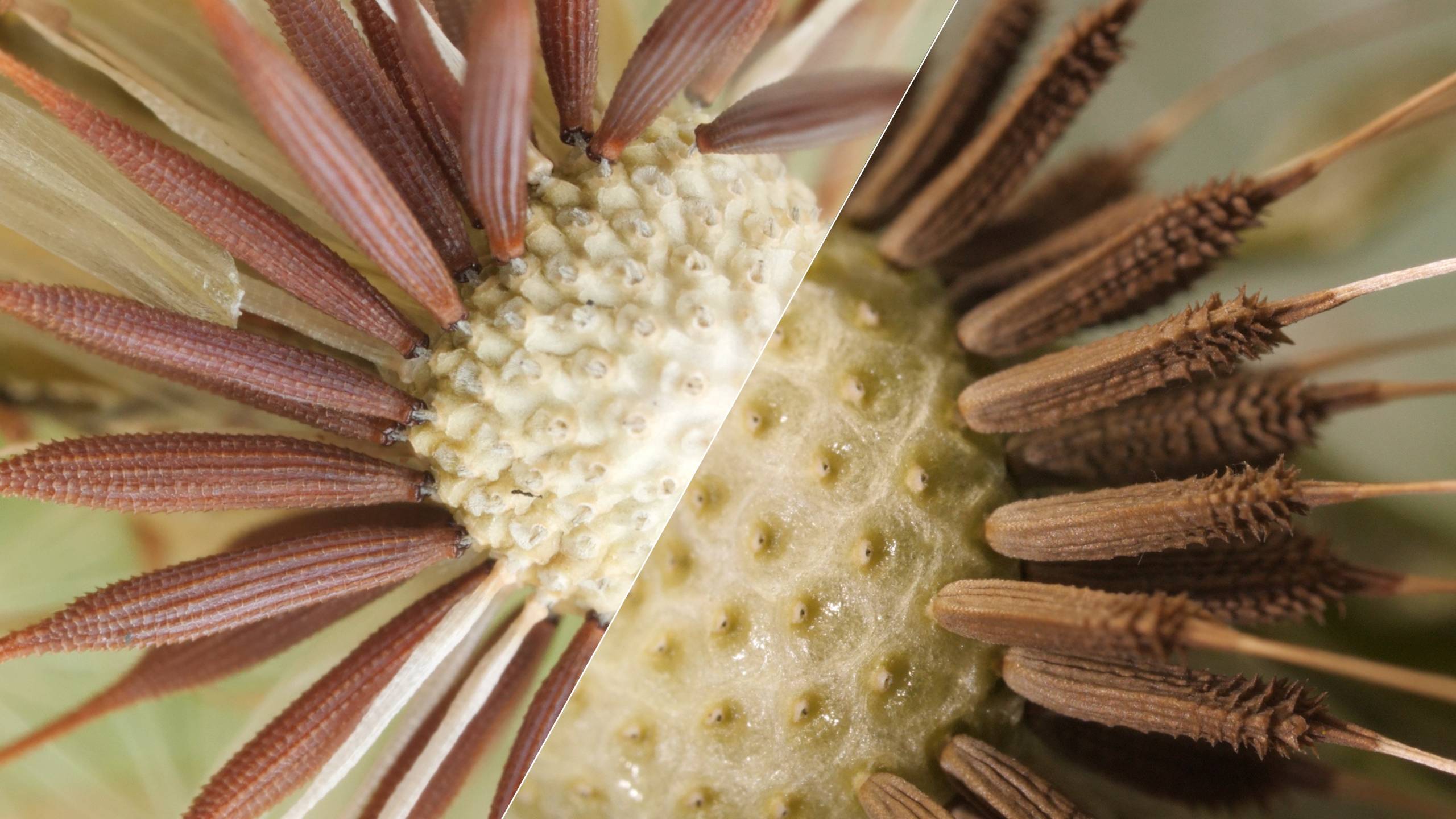
One other way to tell them apart is that each stem of catsears branches into multiple blooms, while dandelions have only one bloom per stem.
But for all their differences, dandelions and catsears are closely related and pollinator favorites. That’s because of a tiny secret up in their petals: What we think of as a dandelion or a catsear flower is actually a cluster of dozens of tiny flowers called ray florets. Each floret makes its own pollen and nectar, which attract a host of different bees, butterflies and other insects.
Catsears serve all customers.
“They have generalists as their pollinators,” said DiTomaso. “There are not specific insects that are required to pollinate them.”
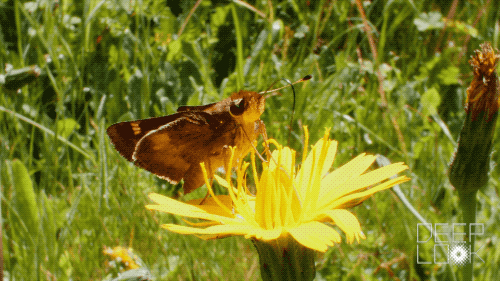
The dandelions in your backyard, called common dandelions and hailing from Europe, don’t even need pollinators to reproduce — they just clone themselves.
“If one dandelion makes it to a new habitat, it can colonize that new habitat with just one individual,” said Lynn. “These dandelions don’t need to have a mate; that’s one of the big advantages.”
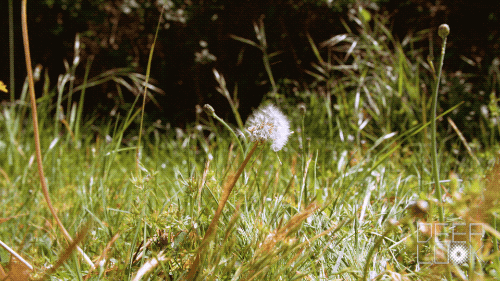
Wind disperses both dandelions’ and catsears’ seeds, another reason for their success. Each floret produces a fruit with a tiny seed inside, and each fruit floats away hanging from an umbrella-shaped structure called a pappus. These tiny pappi (PAP-eye) are what children blow on after making a wish.
“They’re very good at catching wind to detach,” said Naomi Nakayama, a researcher at Imperial College London who has studied dandelion flight.
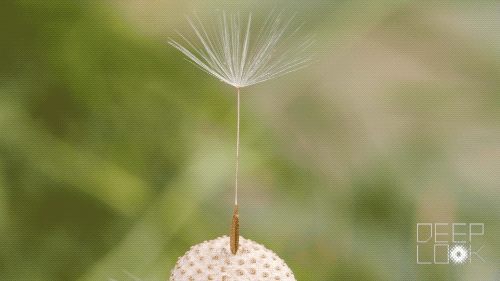
The pappus acts very much like an open umbrella that lifts easily on the wind, even though it’s mainly empty space. Because of its small size, a trick of physics makes it so that the air in between the bristles of the pappi behaves like a solid — sort of like a viscous honey.
“They have an invisible wall they create,” said Nakayama. This helps pappi lift off when the wind hits them. The wall effect also helps the pappus stay adrift. Some air sifts through the bristles and a lot of air swirls around and above the pappus, forming a whirlwind that sucks the pappus up and keeps it afloat.
The vast majority of pappi don’t carry their seed very far — just enough for it to germinate in your backyard. How far they can travel is an open question, Nakayama said, since attaching a GPS onto them would impede their flight.
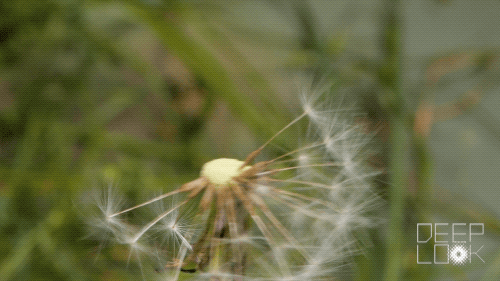
“A lot of people feel comfortable saying they can travel a couple of miles,” she said.
And if most pappi end up landing right in your backyard, at least you might be able to get a good salad or some bee-watching out of the next generation.
